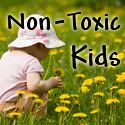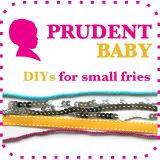Monday, November 24, 2008
Guide to Smart Plastics
INSTITUTE FOR AGRICULTURE AND TRADE POLICY FOOD AND HEALTH PROGRAM
2105 FIRST AVENUE SOUTH MINNEAPOLIS MINNESOTA 55404 USA (612) 870-0453 IATP.ORG
Smart Plastics Guide
Healthier Food Uses of Plastics
For Parents and Children
Plastics are widely used to store and package foods and beverages. Uses include disposable and reusable containers, plastic wraps, cutlery, water bottles and baby bottles. Plastic is convenient, lightweight, unbreakable and relatively inexpensive. However, there are both environmental and health risks from the widespread use of plastics.
Environmental problems: Most plastics are made from petroleum, a non-renewable and mostly imported resource. Plastic packaging also creates unnecessary waste. Although plastic is lightweight, it is bulky, so it takes up a large volume of landfill space.
Health risks: Use of plastics in cooking and food storage can carry health risks, especially when hormone-disrupting chemicals from some plastics leach into foods and beverages. Plastic manufacturing and incineration creates air and water pollution and exposes workers to toxic chemicals.
What plastic labels mean
Not all containers are labeled and a recycling symbol on a product doesn’t mean it’s recyclable. Commonly, only #1 and #2 with narrow necks are recyclable, but some communities recycle other plastics with narrow necks. Check with your local municipality or waste disposal company.
PETE: Polyethylene terephthalate ethylene, used for soft drink, juice, water, detergent, cleaner and peanut butter containers.
HDPE: High density polyethylene, used in opaque plastic milk and water jugs, bleach, detergent and shampoo bottles and some plastic bags.
PVC or V: Polyvinyl chloride, used for cling wrap, some plastic squeeze bottles, cooking oil and peanut butter jars, detergent and window cleaner bottles.
LDPE: Low density polyethylene, used in grocery store bags, most plastic wraps and some bottles.
PP: Polypropylene, used in most Rubbermaid, deli soup, syrup and yogurt containers, straws and other clouded plastic containers, including baby bottles.
PS: Polystyrene, used in Styrofoam food trays, egg cartons, disposable cups and bowls, carry-out containers and opaque plastic cutlery.
Other: Usually polycarbonate, used in most plastic baby bottles, 5-gallon water bottles, "sport" water bottles, metal food can liners, clear plastic "sippy" cups and some clear plastic cutlery. New bio-based plastics may also be labeled #7.
Choose less polluting productsto reduce exposure to chemicals from plastics.
PVC: The toxic plastic
Polyvinyl chloride, also known as vinyl or PVC, poses risks to both the environment and human health. PVC is also the least recyclable plastic.
Vinyl chloride workers face elevated risk of liver cancer.1
Vinyl chloride manufacturing creates air and water pollution near the factories, often located in low-income neighborhoods.
PVC needs additives and stabilizers to make it useable. For example, lead is often added for strength, while plasticizers are added for flexibility. These toxic additives contribute to further pollution and human exposure.
Dioxin in air emissions from PVC manufacturing and disposal or from incineration of PVC products settles on grasslands and accumulates in meat and dairy products and ultimately in human tissue. Dioxin is a known carcinogen. Low-level exposures are associated with decreased birth weight, learning and behavioral problems in children, suppressed immune function and disruption of hormones in the body. 2
Health concerns with food use of plastics
A myriad of petroleum-based chemicals go into the manufacture of plastics. Some can leach into food and drinks and possibly impact human health. Leaching increases when plastic comes in contact with oily or fatty foods, during heating and from old or scratched plastic. Types of plastics shown to leach toxic chemicals are polycarbonate, PVC and styrene. This does not imply that other plastics are entirely safe. These plastics have just been studied more.
Bisphenol A (BPA), a chemical that mimics the action of the human hormone estrogen, can leach from polycarbonate plastic.3 Human exposure to BPA is widespread. A Centers for Disease Control study detected BPA in the urine of 95 percent of adults sampled.4 Scientists have measured BPA in the blood of pregnant women, in umbilical cord blood and in the placenta, all at levels demonstrated in animals to alter development.5,6
Hormones stimulate certain cancers. Bisphenol A has been found to stimulate prostate cancer cells7 and causes breast tissue changes in mice that resemble early stages of breast cancer in both mice and humans.8,9 One study found an association between ovarian dysfunction and higher levels of BPA in urine.10
Early-life exposure to BPA can also cause genetic damage. Researchers found that BPA causes chromosomal errors at low levels of exposure in mice, which can lead to spontaneous miscarriages and birth defects.11 As for human data, one study found that women with a history of recurrent miscarriages had over threefold higher levels of BPA in their blood compared to women without a miscarriage history.12
Of 115 published animal studies, 81 percent found significant effects from even low-level exposure to BPA. While none of the 11 industry-funded studies found significant effects, over 90 percent of government-funded studies did so. Adverse effects include:13
• Early onset of puberty, and stimulation of mammary gland development in females
• Changes in gender-specific behavior
• Changes in hormones, including decreased testosterone
• Increased prostate size
• Decreased sperm production
• Altered immune function
• Behavioral effects including hyperactivity, increased aggressiveness, impaired learning and other changes in behavior
DEHA (di(2-ethylhexyl)adipate) is one of several plasticizers (softeners) to which people have daily exposure through food, water, air and consumer products. PVC cling wrap contains DEHA, which can leach into oily foods on contact and when heated. DEHA exposure is linked to negative effects on the liver, kidney, spleen, bone formation and body weight. It is also a possible human carcinogen, affecting the liver.14
Styrene can leach from polystyrene plastic. Styrene is toxic to the brain and nervous system, among workers with longer-term exposures,15,16 but also has been found to adversely affect red blood cells, liver, kidneys and stomach in animal studies.17 Aside from exposure from food containers, children can be exposed to styrene from secondhand cigarette smoke, off-gassing of building materials, auto exhaust fumes and drinking water.
Tips for safer, moresustainable food use of plastics
1. Avoid using plastic containers in the microwave. Since chemicals are released from plastic when heated, it’s safest not to microwave food and drinks in plastic containers. Instead use glass or ceramic containers free of metallic paint. If you do microwave in plastic, use only plastic labeled "microwave safe." Note that "microwave safe" does not mean that there is no leaching of chemicals. Avoid using for fatty foods, as there is greater leaching of chemicals into fatty foods.
2. Beware of cling wraps especially for microwave use. Instead use waxed paper or paper towel for covering foods. If you do use plastic, don’t let the plastic touch the food. For plastic-wrapped deli foods, slice off a thin layer where the food came in contact with the plastic and re-wrap in non-PVC plastic wrap or place in a container.
3. Use alternatives to plastic packaging whenever possible. Use refillable containers at your local food cooperative. Bring you own take-home containers to restaurants. Bring reusable bags or cardboard boxes to the grocery store.
Fetuses and young childrenat greatest risk
Young children’s immature immune systems, rapid development and different eating patterns make them more vulnerable to toxic exposures. Long term exposures to these chemicals or a few large exposures at a critical time in development could adversely impact children’s health.
4. Avoid plastic bottled water unless you’re traveling or live in an area where the quality of water is questionable. Bottled water, because it is less regulated, has less-certain purity and safety than tap water, and is much more expensive. If you’re worried about tap water quality, consider installing a home water filter or use an inexpensive filter pitcher. Reduce or eliminate use of plastic bottles to avoid landfill waste and exposure to chemicals that leach from the plastic. You can also look for new biodegradable bio-based plastic water bottles.
5. If you do use plastic water bottles, take precautions. If you use a polycarbonate water bottle, to reduce leaching of BPA, do not use for warm or hot liquids and discard old or scratched bottles. Water bottles from #1 or #2 plastics are recommended for single use only. For all types of plastic, you can reduce bacterial contamination by thoroughly washing daily. However, avoid using harsh detergents that can break down the plastic and increase chemical leaching.
Baby bottles
Use alternatives to polycarbonate plastic baby bottles and "sippy" cups. Knowing what we do about BPA leaching and the real risks to children’s health, you might be surprised to learn that most plastic baby bottles and many "training" or "sippy" cups are made of polycarbonate. Fortunately there are alternatives, including baby bottles made of glass, polyethylene or polypropylene. Those made of pliable, milky-colored plastic contain no polycarbonates. Usually baby bottles are not labeled, so if you have questions about the type of plastic used, call the company’s toll-free number listed on the package.
Minimize leaching of BPA from polycarbonate baby bottles. If you can’t avoid use of polycarbonates—for example, if it’s the only bottle your baby will take—then just follow these tips:
• Discard old, scratched polycarbonate baby bottles and "sippy" cups. Plastic that shows signs of wear—such as scratches or a cloudy, crackled appearance—more readily leaches chemicals.20 Scratches can also harbor bacteria.
• Heat foods and drinks outside of the plastic and then transfer into the plastic only after they are cool enough to eat or drink.21
With your food, use 4, 5, 1 and 2.All the rest aren’t good for you.
Safer choices for foods and beverages
Avoid
*
*Except new bio-based plastics labeled as such.
More on baby bottles and "sippy" cups
Avoid: Polycarbonate product examples
Bottles: Avent; Dr. Brown’s; Evenflo (clear); First Years; Playtex Vent Aire; Sassy; TupperCare
"Sippy" cups: Gerber Suzy’s Zoo & Sippy Snacker; Gerber Soft Starter
Safer alternatives: Non- polycarbonate product examples
Bottles: Evenflo glass or pastel polyethylene plastic; Gerber polypropylene opaque plastic; Medela breastmilk polypropylene storage bottles and polyethylene milk storage bags; disposable bottle systems with polyethylene plastic inserts (e.g., Playtex Nurser, Playtex Drop-Ins) "Sippy" cups made of polypropylene or polyethylene: Avent Magic Cup; Evenflo cups (inner lining); First Years Take & Toss; Gerber Color Change, Sport Fun Grip; Playtex Sipster, Big Sipster & Quick Straw
Baby bottle nipples are usually made of silicone or latex rubber. Silicone nipples are lighter in color and are safer, as latex rubber nipples may leach carcinogenic nitrosamines.22
Green chemistry: Bio-based plastics
The emergence of the bio-based plastic industry holds great potential to eliminate many of the current concerns about petroleum-based plastic production, use and disposal. Although bio-plastics may not meet all product specifications, they are now used in food and beverage containers. For example, Natureworks manufactures polylactic acid, or PLA, a corn-based plastic used in a variety of products from containers to bottles to cutlery.18 EarthShell produces foam laminate made from potatoes, corn, rice or tapioca, which is used for food wraps, plates, bowls and takeout containers.19 These products are biodegradable in municipal composting facilities.
Published October 2005 Copyright Institute for Agriculture and Trade Policy
References
1. U.S. EPA, Integrated Risk Information System. www.epa.gov/iris/subst/1001.htm.
2. Institute of Medicine, 2003. Dioxins and Dioxin-like Compounds in the Food Supply- Strategies to Decrease Exposure, National Academies Press, Washington, DC.
3. Howdeshell KL, Peterman PH, Judy BM et al. 2003. "Bisphenol A is released form used polycarbonate animal cages into water at room temperature." Environmental Health Perspectives 111(9): 1180-87.
4. Calafat AM, Kuklenyik, Reidy J et al. 2005. "Urinary concentrations of bisphenol A and 4-nonylphenol in a human reference population." Environmental Health Perspectives 113(4): 391-395.
5. Schonfelder G, Wittfoht W, Hopp H et al. 2004. "Parent bisphenol A accumulation in the maternal-fetal-placental unit." Environmental Health Perspectives 110(211): A703-A707.
6. Ikezuki Y, Tsutsumi O, Takai Y et al. 2002. "Determination of bisphenol A concentrations in human biological fluids reveals significant early prenatal exposure." Hum Reprod 17: 2839-2841.
7. Wetherill, YB, Petre C, Monk KR et al. 2002. "The Xenoestrogen Bisphenol A Induces Inappropriate Androgen Receptor Activation and Mitogenesis in Prostatic Adenocarcinoma Cells." Molecular Cancer Therapeutics 1: 515–524.
8. Markey, CM, Luque EH, Munoz de Toro M et al. 2001."In Utero Exposure to Bisphenol A Alters the Development and Tissue Organization of the Mouse Mammary Gland." Biology of Reproduction 65: 215–1223.
9. Munoz-de-Toro M, Markey C, Wadia PR et al. 2005. "Perinatal exposure to bisphenol A alters peripubertal mammary gland development in mice." Endocrinology, online May 26, 2005 at http://endo.endojournals.org/, accessed June 1, 2005.
10. Takeuchi T, Tsutsumi O, Ikezuki Y et al. 2004. "Positive relationship between androgen and the endocrine disruptor, bisphenol A, in normal women and women with ovarian dysfunction." Endocrine Journal 51(2): 165-169.
11. Hunt, PA, Koehler KE, Susiarjo M et al. 2003. "Bisphenol A exposure causes meiotic aneuploidy in the female mouse." Current Biology 13: 546-553.
12. Sugiura-Ogasawara M, Ozaki Y, Sonta SI et al. 2005. "Exposure to bisphenol A is associated with recurrent miscarriage." Hum Reprod. 2005 Jun 9. [Epub ahead of print]
13. vom Saal F, Hughes C. 2005. "An extensive new literature concerning low-dose effects of bisphenol A shows the need for a new risk assessment." Environmental Health Perspectives. 113(8): 926-933.
14. U.S. EPA, Integrated Risk Information System. http://www.epa.gov/iris/subst/0356.htm
15. Mutti A, Mazzucchi A, Rustichelli P et al, 1984. "Exposure-effect and exposure-response relationships between occupational exposure to styrene and neuropsychological functions." Am. J. Ind. Med. 5: 275-286.
16. Benignus VA, geller AM, Boyes WK et al, 2005. "Human neurobehavioral effects of long-term exposure to styrene: a meta-analysis." Environ Health Perspectives, 113(5): 532-538.
17. U.S. EPA, Styrene Fact Sheet, Dec. 1994, available at http://www.epa.gov/opptintr/chemfact/styre-sd.txt
18. Cargill-Dow, Natureworks web site, http://www.natureworksllc.com/corporate/nw_pack_home.asp, accessed May 31, 2005.
19. EarthShell web site, http://www.earthshell.com/, accessed May 31, 2005.
20. Takao, Y. and K. Arizono. 1999. "Fast screening for Bisphenol A in environmental water and in food by solid-phase microextraction." Journal of Health Science 45: 39.
21. Consumers Union, 1999. "Baby alert: New findings about plastics." Consumer Reports 64(May): 28.
22. Havery DC, Fazio T. 1983. Survey of baby bottle rubber nipples for volatile N-nitrosamines. J Assoc Off Anal Chem. 66(6): 1500-3.
What else can I do?
By choosing safer plastics and limiting plastic waste, you can support a healthier, cleaner environment and protect your child from unnecessary chemical exposures. You can also support companies and public policies that promote safer use of plastics. For example:
• Contact baby bottle manufacturers and urge them to replace polycarbonate in baby bottles with safer alternatives
• Avoid buying products made of PVC, used in plastic containers (#3), building materials, toys and other consumer products
• Buy bio-based plastic alternatives if available
More resources and links at iatp.org/foodandhealth
For more information about the Smart Plastics Guide, contact:
Kathleen Schuler, MPH(612) 870-3468kschuler@iatp.org
2105 FIRST AVENUE SOUTH MINNEAPOLIS MINNESOTA 55404 USA (612) 870-0453 IATP.ORG
Smart Plastics Guide
Healthier Food Uses of Plastics
For Parents and Children
Plastics are widely used to store and package foods and beverages. Uses include disposable and reusable containers, plastic wraps, cutlery, water bottles and baby bottles. Plastic is convenient, lightweight, unbreakable and relatively inexpensive. However, there are both environmental and health risks from the widespread use of plastics.
Environmental problems: Most plastics are made from petroleum, a non-renewable and mostly imported resource. Plastic packaging also creates unnecessary waste. Although plastic is lightweight, it is bulky, so it takes up a large volume of landfill space.
Health risks: Use of plastics in cooking and food storage can carry health risks, especially when hormone-disrupting chemicals from some plastics leach into foods and beverages. Plastic manufacturing and incineration creates air and water pollution and exposes workers to toxic chemicals.
What plastic labels mean
Not all containers are labeled and a recycling symbol on a product doesn’t mean it’s recyclable. Commonly, only #1 and #2 with narrow necks are recyclable, but some communities recycle other plastics with narrow necks. Check with your local municipality or waste disposal company.
PETE: Polyethylene terephthalate ethylene, used for soft drink, juice, water, detergent, cleaner and peanut butter containers.
HDPE: High density polyethylene, used in opaque plastic milk and water jugs, bleach, detergent and shampoo bottles and some plastic bags.
PVC or V: Polyvinyl chloride, used for cling wrap, some plastic squeeze bottles, cooking oil and peanut butter jars, detergent and window cleaner bottles.
LDPE: Low density polyethylene, used in grocery store bags, most plastic wraps and some bottles.
PP: Polypropylene, used in most Rubbermaid, deli soup, syrup and yogurt containers, straws and other clouded plastic containers, including baby bottles.
PS: Polystyrene, used in Styrofoam food trays, egg cartons, disposable cups and bowls, carry-out containers and opaque plastic cutlery.
Other: Usually polycarbonate, used in most plastic baby bottles, 5-gallon water bottles, "sport" water bottles, metal food can liners, clear plastic "sippy" cups and some clear plastic cutlery. New bio-based plastics may also be labeled #7.
Choose less polluting productsto reduce exposure to chemicals from plastics.
PVC: The toxic plastic
Polyvinyl chloride, also known as vinyl or PVC, poses risks to both the environment and human health. PVC is also the least recyclable plastic.
Vinyl chloride workers face elevated risk of liver cancer.1
Vinyl chloride manufacturing creates air and water pollution near the factories, often located in low-income neighborhoods.
PVC needs additives and stabilizers to make it useable. For example, lead is often added for strength, while plasticizers are added for flexibility. These toxic additives contribute to further pollution and human exposure.
Dioxin in air emissions from PVC manufacturing and disposal or from incineration of PVC products settles on grasslands and accumulates in meat and dairy products and ultimately in human tissue. Dioxin is a known carcinogen. Low-level exposures are associated with decreased birth weight, learning and behavioral problems in children, suppressed immune function and disruption of hormones in the body. 2
Health concerns with food use of plastics
A myriad of petroleum-based chemicals go into the manufacture of plastics. Some can leach into food and drinks and possibly impact human health. Leaching increases when plastic comes in contact with oily or fatty foods, during heating and from old or scratched plastic. Types of plastics shown to leach toxic chemicals are polycarbonate, PVC and styrene. This does not imply that other plastics are entirely safe. These plastics have just been studied more.
Bisphenol A (BPA), a chemical that mimics the action of the human hormone estrogen, can leach from polycarbonate plastic.3 Human exposure to BPA is widespread. A Centers for Disease Control study detected BPA in the urine of 95 percent of adults sampled.4 Scientists have measured BPA in the blood of pregnant women, in umbilical cord blood and in the placenta, all at levels demonstrated in animals to alter development.5,6
Hormones stimulate certain cancers. Bisphenol A has been found to stimulate prostate cancer cells7 and causes breast tissue changes in mice that resemble early stages of breast cancer in both mice and humans.8,9 One study found an association between ovarian dysfunction and higher levels of BPA in urine.10
Early-life exposure to BPA can also cause genetic damage. Researchers found that BPA causes chromosomal errors at low levels of exposure in mice, which can lead to spontaneous miscarriages and birth defects.11 As for human data, one study found that women with a history of recurrent miscarriages had over threefold higher levels of BPA in their blood compared to women without a miscarriage history.12
Of 115 published animal studies, 81 percent found significant effects from even low-level exposure to BPA. While none of the 11 industry-funded studies found significant effects, over 90 percent of government-funded studies did so. Adverse effects include:13
• Early onset of puberty, and stimulation of mammary gland development in females
• Changes in gender-specific behavior
• Changes in hormones, including decreased testosterone
• Increased prostate size
• Decreased sperm production
• Altered immune function
• Behavioral effects including hyperactivity, increased aggressiveness, impaired learning and other changes in behavior
DEHA (di(2-ethylhexyl)adipate) is one of several plasticizers (softeners) to which people have daily exposure through food, water, air and consumer products. PVC cling wrap contains DEHA, which can leach into oily foods on contact and when heated. DEHA exposure is linked to negative effects on the liver, kidney, spleen, bone formation and body weight. It is also a possible human carcinogen, affecting the liver.14
Styrene can leach from polystyrene plastic. Styrene is toxic to the brain and nervous system, among workers with longer-term exposures,15,16 but also has been found to adversely affect red blood cells, liver, kidneys and stomach in animal studies.17 Aside from exposure from food containers, children can be exposed to styrene from secondhand cigarette smoke, off-gassing of building materials, auto exhaust fumes and drinking water.
Tips for safer, moresustainable food use of plastics
1. Avoid using plastic containers in the microwave. Since chemicals are released from plastic when heated, it’s safest not to microwave food and drinks in plastic containers. Instead use glass or ceramic containers free of metallic paint. If you do microwave in plastic, use only plastic labeled "microwave safe." Note that "microwave safe" does not mean that there is no leaching of chemicals. Avoid using for fatty foods, as there is greater leaching of chemicals into fatty foods.
2. Beware of cling wraps especially for microwave use. Instead use waxed paper or paper towel for covering foods. If you do use plastic, don’t let the plastic touch the food. For plastic-wrapped deli foods, slice off a thin layer where the food came in contact with the plastic and re-wrap in non-PVC plastic wrap or place in a container.
3. Use alternatives to plastic packaging whenever possible. Use refillable containers at your local food cooperative. Bring you own take-home containers to restaurants. Bring reusable bags or cardboard boxes to the grocery store.
Fetuses and young childrenat greatest risk
Young children’s immature immune systems, rapid development and different eating patterns make them more vulnerable to toxic exposures. Long term exposures to these chemicals or a few large exposures at a critical time in development could adversely impact children’s health.
4. Avoid plastic bottled water unless you’re traveling or live in an area where the quality of water is questionable. Bottled water, because it is less regulated, has less-certain purity and safety than tap water, and is much more expensive. If you’re worried about tap water quality, consider installing a home water filter or use an inexpensive filter pitcher. Reduce or eliminate use of plastic bottles to avoid landfill waste and exposure to chemicals that leach from the plastic. You can also look for new biodegradable bio-based plastic water bottles.
5. If you do use plastic water bottles, take precautions. If you use a polycarbonate water bottle, to reduce leaching of BPA, do not use for warm or hot liquids and discard old or scratched bottles. Water bottles from #1 or #2 plastics are recommended for single use only. For all types of plastic, you can reduce bacterial contamination by thoroughly washing daily. However, avoid using harsh detergents that can break down the plastic and increase chemical leaching.
Baby bottles
Use alternatives to polycarbonate plastic baby bottles and "sippy" cups. Knowing what we do about BPA leaching and the real risks to children’s health, you might be surprised to learn that most plastic baby bottles and many "training" or "sippy" cups are made of polycarbonate. Fortunately there are alternatives, including baby bottles made of glass, polyethylene or polypropylene. Those made of pliable, milky-colored plastic contain no polycarbonates. Usually baby bottles are not labeled, so if you have questions about the type of plastic used, call the company’s toll-free number listed on the package.
Minimize leaching of BPA from polycarbonate baby bottles. If you can’t avoid use of polycarbonates—for example, if it’s the only bottle your baby will take—then just follow these tips:
• Discard old, scratched polycarbonate baby bottles and "sippy" cups. Plastic that shows signs of wear—such as scratches or a cloudy, crackled appearance—more readily leaches chemicals.20 Scratches can also harbor bacteria.
• Heat foods and drinks outside of the plastic and then transfer into the plastic only after they are cool enough to eat or drink.21
With your food, use 4, 5, 1 and 2.All the rest aren’t good for you.
Safer choices for foods and beverages
Avoid
*
*Except new bio-based plastics labeled as such.
More on baby bottles and "sippy" cups
Avoid: Polycarbonate product examples
Bottles: Avent; Dr. Brown’s; Evenflo (clear); First Years; Playtex Vent Aire; Sassy; TupperCare
"Sippy" cups: Gerber Suzy’s Zoo & Sippy Snacker; Gerber Soft Starter
Safer alternatives: Non- polycarbonate product examples
Bottles: Evenflo glass or pastel polyethylene plastic; Gerber polypropylene opaque plastic; Medela breastmilk polypropylene storage bottles and polyethylene milk storage bags; disposable bottle systems with polyethylene plastic inserts (e.g., Playtex Nurser, Playtex Drop-Ins) "Sippy" cups made of polypropylene or polyethylene: Avent Magic Cup; Evenflo cups (inner lining); First Years Take & Toss; Gerber Color Change, Sport Fun Grip; Playtex Sipster, Big Sipster & Quick Straw
Baby bottle nipples are usually made of silicone or latex rubber. Silicone nipples are lighter in color and are safer, as latex rubber nipples may leach carcinogenic nitrosamines.22
Green chemistry: Bio-based plastics
The emergence of the bio-based plastic industry holds great potential to eliminate many of the current concerns about petroleum-based plastic production, use and disposal. Although bio-plastics may not meet all product specifications, they are now used in food and beverage containers. For example, Natureworks manufactures polylactic acid, or PLA, a corn-based plastic used in a variety of products from containers to bottles to cutlery.18 EarthShell produces foam laminate made from potatoes, corn, rice or tapioca, which is used for food wraps, plates, bowls and takeout containers.19 These products are biodegradable in municipal composting facilities.
Published October 2005 Copyright Institute for Agriculture and Trade Policy
References
1. U.S. EPA, Integrated Risk Information System. www.epa.gov/iris/subst/1001.htm.
2. Institute of Medicine, 2003. Dioxins and Dioxin-like Compounds in the Food Supply- Strategies to Decrease Exposure, National Academies Press, Washington, DC.
3. Howdeshell KL, Peterman PH, Judy BM et al. 2003. "Bisphenol A is released form used polycarbonate animal cages into water at room temperature." Environmental Health Perspectives 111(9): 1180-87.
4. Calafat AM, Kuklenyik, Reidy J et al. 2005. "Urinary concentrations of bisphenol A and 4-nonylphenol in a human reference population." Environmental Health Perspectives 113(4): 391-395.
5. Schonfelder G, Wittfoht W, Hopp H et al. 2004. "Parent bisphenol A accumulation in the maternal-fetal-placental unit." Environmental Health Perspectives 110(211): A703-A707.
6. Ikezuki Y, Tsutsumi O, Takai Y et al. 2002. "Determination of bisphenol A concentrations in human biological fluids reveals significant early prenatal exposure." Hum Reprod 17: 2839-2841.
7. Wetherill, YB, Petre C, Monk KR et al. 2002. "The Xenoestrogen Bisphenol A Induces Inappropriate Androgen Receptor Activation and Mitogenesis in Prostatic Adenocarcinoma Cells." Molecular Cancer Therapeutics 1: 515–524.
8. Markey, CM, Luque EH, Munoz de Toro M et al. 2001."In Utero Exposure to Bisphenol A Alters the Development and Tissue Organization of the Mouse Mammary Gland." Biology of Reproduction 65: 215–1223.
9. Munoz-de-Toro M, Markey C, Wadia PR et al. 2005. "Perinatal exposure to bisphenol A alters peripubertal mammary gland development in mice." Endocrinology, online May 26, 2005 at http://endo.endojournals.org/, accessed June 1, 2005.
10. Takeuchi T, Tsutsumi O, Ikezuki Y et al. 2004. "Positive relationship between androgen and the endocrine disruptor, bisphenol A, in normal women and women with ovarian dysfunction." Endocrine Journal 51(2): 165-169.
11. Hunt, PA, Koehler KE, Susiarjo M et al. 2003. "Bisphenol A exposure causes meiotic aneuploidy in the female mouse." Current Biology 13: 546-553.
12. Sugiura-Ogasawara M, Ozaki Y, Sonta SI et al. 2005. "Exposure to bisphenol A is associated with recurrent miscarriage." Hum Reprod. 2005 Jun 9. [Epub ahead of print]
13. vom Saal F, Hughes C. 2005. "An extensive new literature concerning low-dose effects of bisphenol A shows the need for a new risk assessment." Environmental Health Perspectives. 113(8): 926-933.
14. U.S. EPA, Integrated Risk Information System. http://www.epa.gov/iris/subst/0356.htm
15. Mutti A, Mazzucchi A, Rustichelli P et al, 1984. "Exposure-effect and exposure-response relationships between occupational exposure to styrene and neuropsychological functions." Am. J. Ind. Med. 5: 275-286.
16. Benignus VA, geller AM, Boyes WK et al, 2005. "Human neurobehavioral effects of long-term exposure to styrene: a meta-analysis." Environ Health Perspectives, 113(5): 532-538.
17. U.S. EPA, Styrene Fact Sheet, Dec. 1994, available at http://www.epa.gov/opptintr/chemfact/styre-sd.txt
18. Cargill-Dow, Natureworks web site, http://www.natureworksllc.com/corporate/nw_pack_home.asp, accessed May 31, 2005.
19. EarthShell web site, http://www.earthshell.com/, accessed May 31, 2005.
20. Takao, Y. and K. Arizono. 1999. "Fast screening for Bisphenol A in environmental water and in food by solid-phase microextraction." Journal of Health Science 45: 39.
21. Consumers Union, 1999. "Baby alert: New findings about plastics." Consumer Reports 64(May): 28.
22. Havery DC, Fazio T. 1983. Survey of baby bottle rubber nipples for volatile N-nitrosamines. J Assoc Off Anal Chem. 66(6): 1500-3.
What else can I do?
By choosing safer plastics and limiting plastic waste, you can support a healthier, cleaner environment and protect your child from unnecessary chemical exposures. You can also support companies and public policies that promote safer use of plastics. For example:
• Contact baby bottle manufacturers and urge them to replace polycarbonate in baby bottles with safer alternatives
• Avoid buying products made of PVC, used in plastic containers (#3), building materials, toys and other consumer products
• Buy bio-based plastic alternatives if available
More resources and links at iatp.org/foodandhealth
For more information about the Smart Plastics Guide, contact:
Kathleen Schuler, MPH(612) 870-3468kschuler@iatp.org
Subscribe to:
Post Comments (Atom)













Glass is the better choice! Even for drinking straws!
ReplyDelete